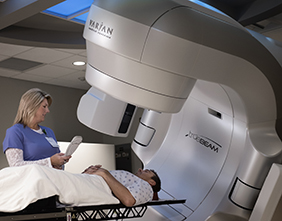Maintaining Balance as You Age
posted on: 7/24/2018 1:13:51 PM
Health & Fitness Guest Columnist
Tony Rampulla, DPT, CSCS, Physical Therapy Manager
Lima Memorial Health System
According to the Centers for Disease Control and Prevention, “falls are the leading cause of fatal injury and the most common cause of non-fatal, trauma-related hospital admissions among older adults.” It is because of these alarming statistics that we must bring awareness to the community and our healthcare providers to focus on fall prevention.
As a physical therapist, I find this topic both fascinating and challenging. One of the most important components in preventing a fall is early identification of an individual’s risk of falling. Through specialized training, physical therapists can employ clinical skills that will decrease an individual’s likelihood of suffering from a fall. What if we were able to assist every patient who is at risk of falling, and we did so before the fall? Could we change the landscape and expected outcomes for our aging population to prevent a devastating fall?

For many years researchers have studied the impact aging has on the body. There is substantial evidence that as we age, balance can be diminished from a variety of causes. Our bodies normally rely on three systems for balance: vestibular system or inner ear, the visual system and proprioception, or the body’s ability to sense itself. If any of these systems fail, your balance can be compromised, and unless compensated by the other systems, a fall will likely occur.
Collaboratively, these systems play a vital role with maintaining balance. Clinically, I have developed a strong interest in the vestibular system. The anatomical structures that comprise the vestibular system are complex fluid filled-tubes and chambers. As fluid moves through the inner ear, specialized nerve endings gather information about the body movement and provide feedback to the brain. A problem arises during the aging process as patients begin to have other medical conditions, such as glaucoma or diabetes. These conditions promote increased reliance on the vestibular system, which is a system already predisposed to decreasing effectiveness with age.
Often times, someone who suffers from vestibular dysfunction will have complaints of extreme dizziness, nausea, vomiting and involuntary eye movements. It is through thorough evaluation that a PT gathers information to identify the underlying cause. After identifying impairments associated with the aforementioned symptoms, a physical therapist initiates a plan of care for treatment. This plan is tailored to promote increased activity of the vestibular system and restoration to a normal state.
There are a wide range of conditions that occur within the vestibular system, but vestibular dysfunction, that evolves as we age, is typically treatable if caught at an early stage. The focus is to keep the vestibular system working.
My recommendation for individuals experiencing dizziness, balance difficulty or changes in vision is to schedule an annual check-up with their provider. This will allow for continued monitoring to detect changes that may be affecting the body and balance. Additionally, as you age, it is more and more important to stay active. By maintaining an active lifestyle, you are ensuring your body is challenging itself and working to prevent significant medical conditions resulting from inactivity.
I challenge you to stay active and seek routine screenings to help combat the loss of balance and increased risk of falling.
Originally published in The Lima News Health and Fitness section.
Website






